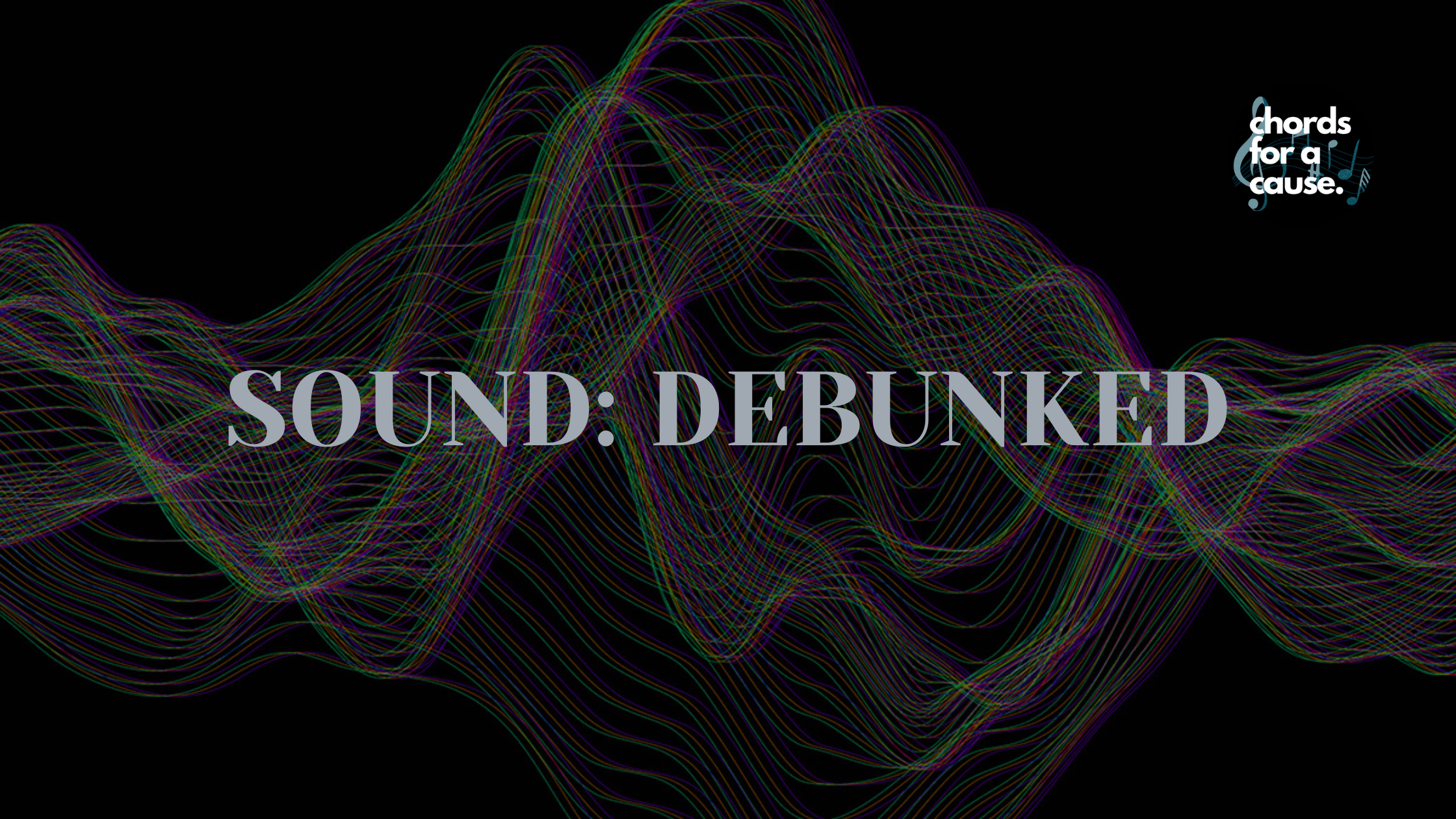Sound: Debunked!

Sound! If you’re taking the time out of your day to even glance at this blog, you probably have something of an increased understanding and appreciation for this wonderful phenomenon that influences every aspect of our existence. But how does this transition of energy really work? What produces those pleasant sounds that bring a smile to our eardrums, and what causes those jarring trills that make you want to cower under a rock and wish you were never born? It all boils down to harmony.
Let’s start off with a simple introduction to the production of sound – rather than being some sort of mystical, magical field, sound is produced through the collision of particles, big or small! To demonstrate, imagine yourself at the public pool: let’s say you woke up and chose violence, leading to a potentially disastrous cannonball into the deep end of the pool: let’s just ignore the actual sound produced for a sec and just look at the water. The faster you’re moving when your flailing body strikes the water, the more water will get displaced, leading to bigger ripples emanating from the point of impact. In this case, the water is an analogy for air particles that oscillate and collide with each other when any instrument or mechanism is used to produce sounds, whether it’s a newborn’s young vocal folds or the brilliantly maintained strings on a hundred-year-old cello. Where there’s collision, there will be sound, so YES, if a tree falls in a forest, it does, indeed, make a sound.
Now…this would be enough for most people, but you’re different! You crave to understand the deeper meaning behind a principle that has guided you since your very conception! With that in mind, let’s talk harmony. This combination of sound is produced through the reception of various frequencies of collision in one’s eardrum, causing different sets of vibration, and thus, harmony! When the nature of the vibration is roughly similar, such as those produced by the same type of instrument or the same placement of a note in one’s voice, the production of harmony drifts toward the end of the spectrum where the sound becomes more unified and FAR more difficult to pick apart, while entirely different instruments or placements, though producing a harmony in terms of pitch, generally appears separate to the rest of the harmony. This distinction is what helps listeners distinguish the beautiful timbre of a solo soprano from the clashing dissonance: a principle that influenced many madrigals and motets in the Renaissance era, whose pieces were often written with a soprano line that appeared disconnected from the rest of the chorus. It should, however, be noted that harmony is DELICATE. Slight modulations of amplitude, frequency, or energy could very easily skew the chord in directions that make it sound grotesquely dissonant or out of tune, which should help you appreciate this phenomenon even more: its delicacy contributes to its beauty.
But what can you do to immerse yourself in this fragile synthesis? Studies have indicated that the production of tightly-knit vocal harmonies can produce phenomenological responses (1) in the human body (presumably because of how fulfilling the experience can be), but this should hardly be an incentive for you! The harmony we find and make in our lives, no matter how straightforward it may seem, is finite: no amount of effort and persistence will result in the same convergence of collisions as in that one moment in time. My advice? Enjoy it while it lasts 🙂
Sources and Further Reading:
1https://core.ac.uk/download/pdf/190334788.pdf
https://www.abdi-ecommerce10.com/asa/images/product/medium/0-88318-767.pdf

